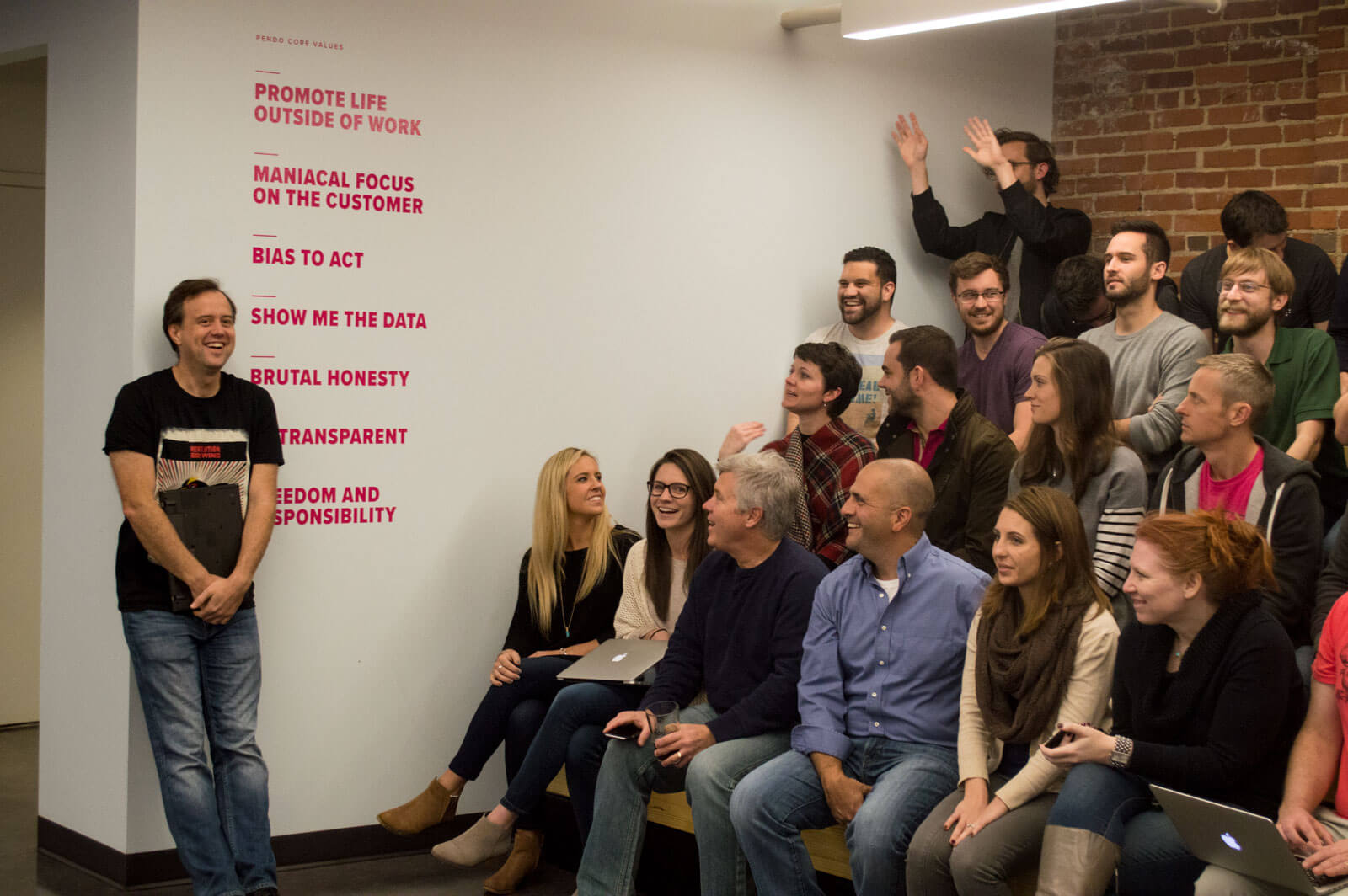Recently, I was speaking with a candidate for a position who asked, “Do you share your core values with customers?” I explained that we hadn’t, but that it was a really good idea. Frankly, I hadn’t even thought of it. When I think of Core Values, I think more internally and about our employees and culture. But because we view our customers as partners, we saw the value in sharing Pendo’s core values with them as well.
This post represents the first of eight posts about Pendo’s Core Values. This is my attempt to share our values with customers, but I hope it’s also useful for prospective and current employees.
Background
The week after we raised the first seed financing, we had a meeting with the founding team of seven (5 full-time) to define our values. While most of us had worked together previously in some capacity, the collective group was new. We spent time talking about values we liked and disliked at prior companies. Then, we chose four founding values that reflected how we wanted to run the company.
- Measure and Act
- All work and no play is no good at all
- Seek Innovation
- Help customers win
Looking back now, setting values for a company at this stage isn’t super critical. I’d say they are ideas- not values.
Our goal at this stage was crystal clear: build product, get customers and find product/market fit. Core Values were present, but weren’t cited nor really important.
Checking In
Fast forward two years, and we hit our goal. This was great news for us. Hitting that goal helped us raise our Series A financing and meant we needed a new goal: scaling and starting to build a repeatable business model. This meant hiring and onboarding new people and making sure new employees believed in our core values.
At this time, our exec team met off-site to revisit the original values and check-in with one another. We had operated as a company for two years now and had learned a ton about each other. While we had achieved success together, it wasn’t without some conflict. As I reflect on it now, we followed the traditional Tuckman model for team formation: forming, storming, norming, and performing. Storming is a necessary stage of team development, and it can be unsettling. Erik Troan (our CTO) and I are experienced technologists. We both have very strong personalities, we shared a 200 sq ft co-working space for two years, and we worked together on the exact same codebase for a while. An engineer once commented that “mom and dad are fighting.” He didn’t distinguish who was “mom” and who was “dad”, but these were our necessary “fights” to help understand each other and our different work methods.
So when we revisited our values, we made a bunch of changes. We removed one of our original values, added four, and adjusted the wording on all of them. I’ve never been a fan of having a large number of values. It’s hard to remember them when you have more than 4 or 5. Yet, we felt strongly that all seven reflected who we were and how we were acting, and none were likely to change.
- Promote Life Outside Work
- Brutal Honesty
- 徹底的にお客様にフォーカスする
- 行動を起こす
- Show me the Data
- Be Transparent
- Freedom and Responsibility
Removing a Value
“Seek Innovation” existed because when we started, we made a number of very innovative decisions. We chose Google AppEngine and Golang despite never having used it. We chose a flat-file website instead of a traditional CMS like WordPress or Drupal. We sought solutions that we saw as the future. We felt that it was core to our behavior.
When we evaluated our recent behavior against this value, a number of decisions stood out. We chose Salesforce and Desk.com as our CRM and Support solutions. These were strategic decisions. We knew that the SFDC ecosystem was important to us and used by many of our prospective customers. Using something our customers also used gave us better customer empathy. While these are both great solutions, they were not the most innovative. But frankly, we didn’t care whether they were innovative or not- hence, it wasn’t a core value that governed our decisions. So we removed it.
Present Day
At our executive retreat this year, we re-evaluated our core values. I had each executive write down the core values and cite an example for each. Sadly, I was the only executive who recalled all seven values (see above on having too many), but there wasn’t single value that was forgotten more than the others. After we shared our stories and had a lively conversation, we elected to retain all seven values.

Living the Values
Inculcating core values is more than an executive or management task. It takes the entire company to live values. Part of living values is capturing stories that reflect how we live them. One of the great programs we’ve developed is a peer recognition program called “Panks.” This program was organized by our cross-functional culture team as a way to share more around values and have peer recognition. Here’s how it works: each Pendozer gets a poker chip with each of the Core Values. Chips can then be given to those living the value, and stories are shared on Slack so that we all know why that person received a “Pank.” At the end of each quarter, we count the number of chips and give a prize to the Pendozer with the most chips. I love this Slack channel- it’s filled with positive energy and highlights the best of our culture.
What’s Next?
My goal over the next seven posts is to introduce each value and share the stories behind them. I’ll provide more history behind the value, color on the wording changes, and some of the challenges we’ve faced with them. For every positive aspect of a value, there’s an accompanying dark side. We’ll share the dark sides and our ideas on ways to mitigate them.